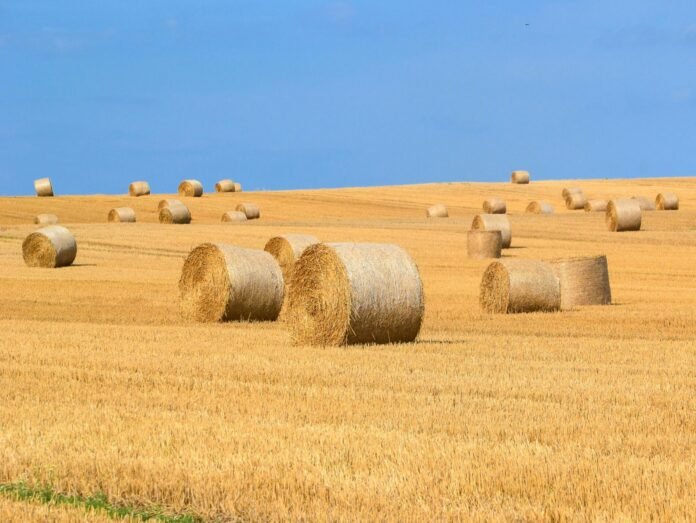Also known as: Hay, Buffalo Herb, Lucerne, Purple Medic, or Sanfoin
Family: Fabaceae
Origin: South-central Asia
Traditional, purported, and contemporary uses: (“Hay,” you say? “Is this a gardening and plant guide for cows? Are you actually suggesting that alfalfa might have uses for we human sorts as well?”
Yes, in fact, that heavy, scratchy, itchy stuff – which I helped cut, bale, and stack in the barn loft as a teenager in western Kansas – just may have many medicinal qualities.
(Trivia Time: For some of us, “Alfalfa” may conjure up another mental image. It was the on-screen name of child actor Carl Switzer, who played a prominent role in 61 (from 1935 to 1940) of the 220 short films called “Our Gang.”
Others may remember these as “The Little Rascals,” the unofficial name used in television syndication decades later. They were produced by Hal Roach Studios and/or Metro-Goldwyn-Mayer between 1922 and 1944. Immensely popular, this film series centered on children being themselves – a quality not typically seen in films of the 1920s. The equal treatment in the storylines of girls and boys, as well as whites and nonwhites, was also revolutionary for that period.)
But back to our subject, which is often thought of by most folks as bovine and equine fodder. Alfalfa was first cultivated in the region of present-day Iran and Turkey (though some contend it was China and India) around 6,000–9,000 years ago and was spread globally through trade and conquest. The earliest clear reference to Alfalfa is from Turkish writings from 1300 B.C. It was also mentioned in Babylonian texts from 700 B.C. Pliny wrote that it was introduced to Greece in about 490 BC when the Persians invaded, and the Romans later spread it throughout Europe.
Its name etymology is a bit convoluted. It entered English through Spanish, which came from the Arabic, Persian, and Kashmiri word al-faṣfaṣa meaning “best horse food”. But it appears to suit the palates of critters of various other sorts – such chickens, deer, elk, goats, guinea pigs, rabbits, sheep, voles, and wild turkeys. Perhaps with some boiled Cattails and a bit of Dandelion wine . . .
The plant – and its Anglicized name – found its way to the Americas in the 16th century via the Spanish.
But beasts of the two-legged sort have found it of use as well! Traditionally, it has also been consumed by humans for its various medicinal properties, such as the treatment of asthma, bladder misbehavior, boils, cancer, diabetes, fever, high cholesterol, indigestion, kidney difficulties, and upset stomach.
It is also used for osteoarthritis, rheumatoid arthritis, and excessive bleeding or the bruising disorder called thrombocytopenic purpura – A condition in which platelets (blood cells that cause blood clots to form) are destroyed by the immune system. The leaves are used to lower cholesterol, as well as for an array of kidney, prostate, and urinary tract ailments.
Atop this all, it is reported to help prevent or cure scurvy, increase the efficiency and improve the contraction of the heart muscle, assist in increasing the passage of urine, have purifying and detoxifying effects, and stimulate blood flow in the pelvic area and uterus. Other professionals say that it stimulates menstruation and induces lactation for nursing mothers.
It may have healthful benefits for blood sugar management and relief from some menopause symptoms.
It contains antioxidants, along with nutrients like vitamins A, C, E, and K, calcium, copper, folic acid, iron, magnesium, phosphorus, and potassium. Lastly, properly ingested Alfalfa may possibly aid in weight loss by increasing our feeling of fullness.
No one needs to place an Alfalfa bale in the center of the dining table. Its benefits can be realized by consuming it as fresh sprouts in salads and sandwiches or as a dietary supplement in tablets, capsules, powders, tablets, and tea. (However, be advised, raw sprouts can, potentially, carry a risk of bacterial contamination. Accordingly, some sources recommend cooking them, especially for those with weakened immune systems, the elderly, and children.
Those fresh sprouts can be incorporated in salads, sandwiches, wraps, as a garnish on other foods, as a tea by brewing its dried leaves, or as Alfalfa powder in smoothies, to mask its strong flavor.
(Have you, heretofore, ever “herd” of such as all of this? And, believe it or not, it’s no “bull,” so don’t sit there “cowed!” OK, do you think that I have “milked” this bovine punnery enough?)


